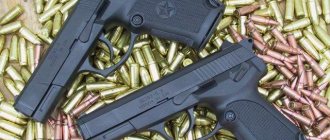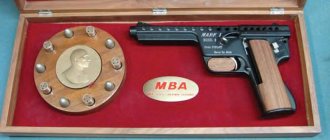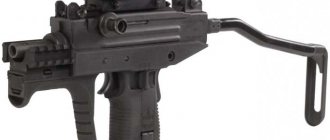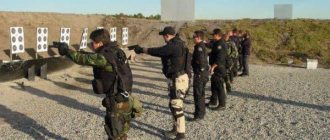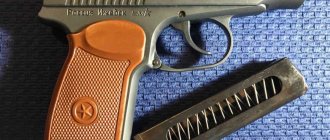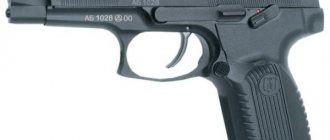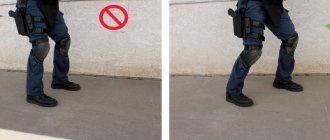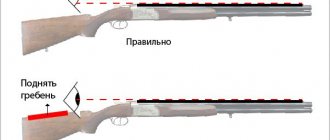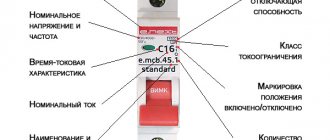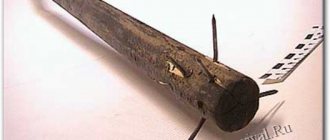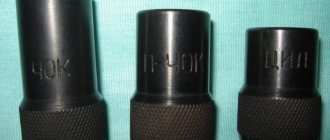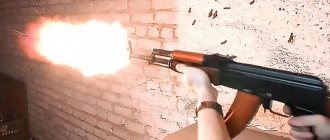This term has other meanings, see.
| Korovin pistol (TK) | |
| 6.35 mm Korovin pistol (T.K.) | |
| Type | self-loading pistol |
| A country | USSR USSR |
| Service history | |
| Years of use | since 1927 |
| Adopted | 1926 |
| In service | Red Army, NKVD, State Bank of the USSR |
| Wars and conflicts | Soviet-Finnish War (1939–1940)[1] World War II |
| Production history | |
| Constructor | S. A. Korovin |
| Designed by | 1926 |
| Manufacturer | Tula Arms Factory |
| Years of production | 1926—1935 |
| Characteristics | |
| Weight, kg | 0.423 (unammo) 0.485 (loaded) |
| Length, mm | 127 |
| Barrel length, mm | 67,5 |
| Width, mm | 24 |
| Height, mm | 98 |
| Cartridge | 6.35×15 mm Browning |
| Caliber, mm | 6,35 |
| Work principles | blowback |
| Initial bullet speed, m/s | 228 |
| Sighting range, m | 25 |
| Type of ammunition | detachable single-stack box magazine for 8 rounds |
| Aim | open, unregulated |
| Korovin pistol (TK) on Wikimedia Commons | |
TK
(Tulsky, Korovina, GAU index -
56-A-112
) - the first Soviet serial self-loading pistol [2].
Story
In 1925, the Dynamo sports society ordered the Tula Arms Plant to develop a compact pistol chambered for 6.35x15 mm Browning as a self-defense weapon[2].
Work on creating the pistol took place in the design bureau of the Tula Arms Plant. In the fall of 1926, gunsmith designer S.A. Korovin completed the development of a pistol, which was named the TK pistol
(
Tula Korovin
)[2].
At the end of 1926, TOZ began producing the pistol; the following year the pistol was approved for use, receiving the official name “Tula Pistol, Korovin, Model 1926.” However, it was not officially adopted[2].
Due to the fact that the pistol was a civilian and sporting weapon, it had a non-military stamp on it. Later, the weapon received the GAU army index 56-A-112.[3]
Between the autumn of 1926 and 1935, several tens of thousands of Korovin guns were produced[4], but the exact number of pistols produced is unknown[2].
TK pistols entered service with the NKVD of the USSR, middle and senior command staff of the Red Army[5], civil servants and party workers[6].
The TK was also used as a gift or award weapon (for example, there are known cases of awarding Stakhanovites with it).
After the start of the Great Patriotic War, in 1941-1942. Due to the increased need for personal weapons for the active army and the shortage of TT pistols, a certain number of TKs were transferred to the junior command staff of the Red Army[2].
In the period after the Great Patriotic War, TK pistols were kept for some time in savings banks as a reserve weapon for employees and collectors[2].
Pistol Korovin TK (USSR)
In his youth, Russian designer S.A. Korovin (1884–1946) had the opportunity to work for several years in Belgium at the J. Browning arms factory located in Liege. Here he was able to thoroughly study advanced production and become familiar with the design of the most popular pistol in Europe - the Browning mod. 1906 During the Civil War that broke out in Russia after the Great October Revolution, the 36-year-old designer entered the Tula Arms Factory. Despite the fact that at this time the officers of the Red Army were in dire need of a reliable, compact pistol capable of replacing the revolver, Korovin received an order from the Dynamo society to develop a sports pistol. Probably, this choice was influenced by the “old regime” origin of the designer.
In 1923, work on the new pistol was completed. This was the first self-loading pistol developed in Soviet Russia, designed for the 7.65 mm Browning cartridge (probably, the experience gained by the designer while working in Liege had an effect). True, for Korovin’s pistol this cartridge was remade and the charge was somewhat strengthened. The design of the pistol was similar to the Mauser mod. 1910. But with similar dimensions, Korovin’s pistol had greater muzzle energy, a larger number of cartridges in the magazine (9 versus 8), a more comfortable handle and a conveniently located safety.
In the tests carried out, the Korovin system pistol showed good accuracy of fire (later this became a characteristic feature for all models of Korovin pistols), but, according to the commission members, it was complicated and heavy. After such a verdict, the pistol could not count on mass production and was produced only in single copies.
Read: Design of the MAV D pistol
For three years, Korovin improved the design of his pistol. The number of parts was reduced by more than half (according to some sources, there were 56 of them in the model 1923 pistol!), and the excessively tight trigger became smoother. In addition, the new pistol, still designed for the Browning cartridge (but no longer for 9 rounds, but for 8), had a fairly small size and weight, which made it convenient for long-term concealed carry. During testing, the Korovin pistol mod. 1926, thanks to the successful layout and shape of the handle, which ensured a reliable grip, was distinguished by good shooting accuracy, even despite the short sighting line and small handle. The absence of a trigger requiring cocking did not distract the shooter and contributed to increased accuracy of fire.
According to all these criteria, the pistol, called TK (Tula, Korovin), was far superior to the Nagant model model revolver in service with the Red Army. 1895. This is probably why the Korovin pistol mod. 1926, designed as a civilian weapon, was very popular among the commanders of the Red Army and the NKVD troops as a military weapon, as well as among party and economic workers of various ranks as a pistol for self-defense. There are known cases when the Korovin system pistol was awarded to leading production workers and Stakhanovites.
It is also known that Korovin pistols, TT pistols, Mauser C 96, Nagan revolvers and Mosin rifles were used during the Ust-Usinsk prisoner uprising of 1942 - the first armed uprising in the history of the Gulag. Moreover, both the rebels and the VOKhR and NKVD detachments fighting against them had at their disposal the above-mentioned types of small arms.
Read: DShK machine gun
Production of the TK was discontinued in 1935. Despite this, Red Army officers continued to use it almost until the very end of the Great Patriotic War. The exact number of TK pistols produced over the years is unknown and is approximately up to 300,000 units.
In 1929, a new 7.62 mm cartridge was created in the Soviet Union, which was subsequently planned to be used in all Soviet pistols. This time, together with V.F. Tokarev and other Soviet designers, S.A. also joined the competition to develop a new combat pistol. Korovin. A year later the work was completed. During testing, the Korovin system pistol “shot” no worse than other models (it had no equal in terms of accuracy of fire), but it turned out to be more sensitive to dirt and dust. Now it is difficult to judge how objective such an assessment was, but a pistol developed by Tokarev, which later became known as the TT, was adopted for service.
DESIGN OF THE TK PISTOL
The automation of a self-loading pistol of the Korovin system is built on the principle of using the recoil energy of the bolt, which, after firing, returns to its original position with a return spring, removing the next cartridge from the magazine and sending it into the chamber. In this case, the mainspring of the pistol is located at the rear. The return spring was located under the barrel in the channel of the pistol frame.
The striking mechanism is of the striker type, with the mainspring acting directly on the firing pin, held in cocking position by a spring-loaded sear, which rotates during descent under the influence of a trigger rod connected to the trigger. The ejector is located on top, and the spent cartridge flies up.
Read: 203-mm self-propelled gun 2S7 “Pion”
A flag-type safety in the rear position locks the trigger. It is very successfully mounted on the left side of the frame and is designed for the thumb of the right hand. One of the features of the TK pistol is the presence of an ejector located in the upper part of the bolt casing, which is also an indicator of the presence of a cartridge in the chamber.
The sighting devices consist of a front sight mounted on the barrel and a fixed rear sight on the bolt casing and are designed for an effective firing range of 25 m. In reality, the effective range of the TK pistol does not exceed 15–20 m.
Box-type magazine with a capacity of 8 rounds. After all the cartridges in the magazine are used up, the bolt casing remains in the rearmost position when stopped. The magazine release is located at the bottom of the handle.
The design of the TK pistol, consisting of only 26 parts, reflects the original features inherent in all samples of S.A. weapons. Korovin, in particular the principle of multifunctionality of parts. Thus, the safety axis simultaneously serves to hold the barrel in the frame; the protrusion of the trigger rod serves as a reflector for the spent cartridge case; plate single-leaf trigger rod spring - magazine release spring; the rear end of the return spring rod is a fuse lock.
During mass production, the smooth pistol grip acquired a more attractive appearance. It has notches and a monogram “TOZ” - Tula Arms Plant.
You might be interested:
- Pistol "Mauser"
- Pistol "TT" (Tula, Tokarev)
- Fedor Tokarev - creator of TT
- The Makarov pistol
- PSM pistol
- Model 1910 Browning pistol
Subscribe to
our channel in Yandex.Zen
Design
The TC uses a blowback design. The safety lever is located on the left side of the body, above the trigger. The magazine latch is at the bottom of the handle.
There were three main modifications of the TK pistol, which differed in the shape and material of the grip cheeks, the method of their fastening, the manufacturing features of the frame, the shape of the rear sight base, and the angle of inclination of the notches on the bolt casing. Some modifications can also be roughly divided into early and later, depending on a number of minor design changes[2].
The side panels of the handle were made in two main versions: from wood (with a cross-shaped notch or with larger vertical grooves) and from black bakelite with the TOZ logo. A very small number of pistols were produced with gutta-percha cheeks[2]. Until the early 1930s, the cheeks were fastened with screws, later - using spring latches of the type.
Ammunition
The TK pistol is designed to use 6.35 mm Browning pistol cartridges. These cartridges were both in stock from tsarist times and the Civil War, and were imported from Germany, along with Mauser 1910/14 pistols.
Thanks to the TC, the number of 6.35 mm pistols in the country increased significantly, in order to reduce dependence on imported supplies of cartridges, in 1934 it was decided to master the production of 6.35 mm Browning cartridges by the domestic industry (as well as 7.65 mm cartridges Browning). In the USSR, the cartridge was named 6.35 mm pistol cartridge 57-N-112 (Browning)
, where 57-N-112 is the GAU index.
Serial production began in 1934 at the cartridge plant No. 3 named after T.
Volodarsky in Ulyanovsk (part of the Patrubvzryv trust). The cartridges were intended for TK pistols and foreign-made 6.35 mm pistols that were in use[7]. Production of the cartridge continued until the start of World War II. The closure was marked as “Cartridges for a Browning pistol”[7].
Some sources indicate that Soviet 6.35 mm cartridges had a reinforced powder charge, which is not true and is a recurring error. Domestic cartridges provided the standard bullet speed for 6.35 mm cartridges: 220-230 m/s[8]
Korovin Sergey Alexandrovich
Designer and gunsmith Sergei Aleksandrovich Korovin was born in 1884 in Kharkov, into the family of a small employee. In 1905 he studied at the Kharkov Institute of Technology. For participation in the revolutionary movement he was expelled from the institute, after which he emigrated from Russia and settled in Liege, Belgium. Here he worked at the Browning arms factories. In 1914 he returned to his homeland, and after unsuccessful attempts to get a job as a weapons designer at the Tula Arms Plant, he settled in Petrograd, where he worked at several factories. In 1920, Korovin's dream came true and he became a designer of small arms at the Tula Arms Factory. In 1920 - 1921, Korovin developed his first self-loading pistol chambered for the 7.65 mm Browning cartridge. At the beginning of 1923, the Korovin system pistol underwent field testing. On May 29, 1923, the Artillery Committee issued a summary: “The Korovin system pistol presents more advantages over other pistol systems in terms of its constant readiness for combat and safety of handling. The functioning of all its mechanisms, even when dusty, is reliable. The testing site considers this pistol suitable for arming command personnel.” The disadvantages of the pistol were the complex design and heavy weight (915 grams). After modifications, the pistol in the version chambered for the 6.35 mm Browning cartridge was adopted in 1926 as a civilian model of personal weapons and was named TK (Tula, Korovina). In 1927, Korovin converted it to 7.65 mm caliber. At the beginning of 1930, Korovin developed a submachine gun chambered for a 7.62 pistol cartridge with which he participated in a competition for the best submachine gun for adoption by the Red Army. Also taking part in the competition were Tokarev, Dyagtyarev, and later Prilutsky and Kolesnikov. Dyagtyarev won the competition, whose submachine gun was adopted for service in 1934. On May 17, 1938, by order of the People's Commissar of Defense and the People's Commissar of Defense Industry, a competition was announced for the development and production of a 7.62 mm automatic pistol for arming the Red Army. Designers Tokarev, Rakov, Voevodin also took part in the competition. In 1939, Korovin presented his own version of the pistol. In March 1941, comparative tests of pistols were carried out; the end of the competition was prevented by the outbreak of war. During the war, Korovin worked in Tula, where he developed simplified versions of a pistol - a machine gun and a mortar, which were assembled in besieged Tula from scrap materials, tested in the trenches and entered service with the Tula workers' regiment. At the very end of the war, Korovin participated in a competition to develop an assault rifle chambered for 7.62x43 mm. The samples he created were the world's first machines designed according to the "bullpup" design. The competition was won by M.T. Kalashnikov, Korobov took second place. Sergei Aleksandrovich Korovin died in 1946. For his inventive activities, Korovin was awarded the Order of the Red Star and the Badge of Honor, and the medal “For Valiant Labor in the Great Patriotic War 1941 - 1945.”
02 August 2013
Notes
- Taras, 1999, p. 158.
- ↑ 123456789
Klishin, 2014. - Korovin pistol: Tula TK, small-caliber, technical characteristics, drawings, history of creation (Russian), Book of War
(June 13, 2018). Retrieved June 21, 2020. - Blagovestov, 2000, p. 42-45.
- Monetchikov, 2002.
- Frenkel, 1984, p. 105-106.
- ↑ 12
Solovyov, 2002. - Set of drawings No. 3-866, lit. And plant No. 3 named after T. Volodarsky for a 6.35 mm pistol cartridge 57-N-112 (Browning), 1934.
Encyclopedia of weapons
Syst. Cow arr. 1924, 1924, Russia
Tactical and technical characteristics Syst. Korovina model 1924 Caliber, mm - 7.65 Browning Pistol length, mm - 180 Weight, g - 856 Magazine capacity, cartridge.
— 10 In his youth, Russian designer S.A. Korovin had the opportunity to work for several years in Liege (Belgium) at the J. Browning arms factory. Here he was able to thoroughly study advanced production and become familiar with the design of the most popular pistol in Europe - the Browning mod. 1906
At the beginning of 1923, work on the new pistol was completed. It became the first self-loading pistol created in Soviet Russia and was designed for the 7.65 mm Browning cartridge (perhaps the experience gained by the designer while working at the Liege factories had an impact).
In 1923, the Korovin 7.65 mm pistol chambered for the Browning cartridge underwent field testing. As the Artillery Committee noted on May 29, 1923, “the Korovin system pistol offers more advantages over other pistol systems in terms of its constant readiness for combat and safety of handling. The functioning of all its mechanisms, even when dusty, is reliable.”
Among the disadvantages were the high complexity of the design and the relatively large mass (915 g). It was further stated that the weapons range “considers this pistol suitable for arming command personnel.” The Artillery Committee decided to order 50 Korovin pistols, but their production, due to repeated alterations, dragged on for several years and ended only in 1927.
The automatic operation of the Korovin pistol is based on the recoil of the barrel during its short stroke. Locking is carried out by a combat stop located below. The hammer-type impact mechanism has a closed trigger position. The mainspring is located in the rear wall of the handle, the return spring is located in the front of the frame.
The safety is made in the form of a lever with a flag located on the left side of the handle. The cartridges are fed from a single-row box magazine with 9 rounds. Removal of the spent cartridge case is carried out by an ejector located in the upper part of the bolt, and the reflection of the spent cartridge case is carried out by the striker, which rests in the rear position on the body of the trigger mechanism. The sight is constant at 25 m.
In 1924, S. A. Prilutsky proposed a pistol designed, like Korovin’s pistol, chambered for the 7.65 mm Browning cartridge.
On July 7, 1928, the Artillery Committee reviewed the results of tests of Korovin and Prilutsky pistols, carried out in parallel with tests of the Walter pistol. Summing up the results of the tests, the Artillery Committee gave preference to the Prilutsky pistol, but in its presented form recognized it as unsuitable for adoption.
In 1929, designers Korovin and Prilutsky converted their pistols to 7.62 mm caliber.
‹ Nagana arr. 1895 Up Syst. Cow arr. 1926 ›
Literature
Books
- Description of the TK automatic pistol. Caliber 6.35 mm. - M.: Oborongiz, 1941. - 76 p.
- Frenkel I. L.
River of Time. Pages of my life. - M., 1984. - Soviet-Finnish War 1939-1940 Reader / ed.-comp. A.E. Taras. - Mn.: Harvest, 1999.
- Blagovestov A.I.
Korovin arr. 1926 (TK) // What they shoot from in the CIS: Directory of small arms / ed. A.E. Taras. - Mn.: Harvest, 2000. - Zhuk A. B.
Encyclopedia of small arms: revolvers, pistols, rifles, submachine guns, machine guns. - M.: AST, Voenizdat, 2002. - P. 428-429.
Articles
- Gorsky S.
“Only for command personnel” or a few pages from the history of the creation of the 6.35 mm Korovin pistol // Master Gun: magazine. - 1999. - No. 31. - P. 81-83. - Solovyov K.
Browning pistol cartridges // Kalashnikov: magazine. - 2002. - No. 5. - P. 24-31. - Monetchikov S.
Russian gunsmiths: Korovin - domestic talent with a Belgian accent // Bratishka: magazine. - 2002. - June (No. 6). - Vasiliev Yu.
Personal opinion about the TC // Weapons: magazine. - 2011. - No. 6. - P. 16-19. - Klishin A.
TK, or “Tula Korovin” // Weapons: magazine. - 2014. - No. 1. - P. 6-16.
Login to the site
Article from the HandGun website. Weaponhttps://hand-gun.narod.ru/pist/korovin.htm
Pistol TK (Tula, Korovin)
Pistol TK (Tula, Korovina) chambered for a low-power 6.35 mm Browning cartridge
The TC was created by designer S. A. Korovin (1884-1946), who in his youth worked for a number of years in Liege (Belgium) at the J. Browning arms factory. A cartridge of the same caliber and with an increased charge of gunpowder was created especially for this pistol. The TK pistol replaced the Browning pistol model 1906, which was popular before its appearance. With similar dimensions, the TK has greater muzzle energy, a larger number of cartridges in the magazine, a more comfortable handle, a better sighting device and a more conveniently located safety. Outwardly, it looks like a Mauser pistol mod. 1910. The TK pistol was produced from 1926 to 1935. for the command staff of the Red Army, the NKVD, party and economic workers. The automatic operation of the pistol works by using the recoil of the free bolt. Striker-type trigger mechanism. The pistol has a non-automatic safety lock that locks the trigger. Open sight. A special feature of the pistol is the absence of a disconnector as a separate part; it is replaced by the springiness of the sear itself. The pistol is small in size and weight, which makes it convenient for long-term concealed carry. The use of Russian-made cartridges provides higher power than that of the Browning pistol of the 1906 model (similar in size and weight). Despite the short sighting line and small grip, the pistol, thanks to its successful layout and shape of the grip, which ensures reliable grip, is distinguished by good shooting accuracy. The “soft” trigger and the absence of a hammer hitting the frame of the pistol at the time of cocking have a positive effect on shooting accuracy. The gun is resistant to contamination and reliable in operation. The simplicity of the design allows you to independently carry out minor repairs on weapons.
Pistol in the hand of the shooter (top view).
The pistol is characterized by a low stopping effect of the bullet and low muzzle energy (about 104 J). Such values do not ensure reliable incapacitation of the enemy even if a bullet hits vital organs. A wounded enemy is capable of firing back. The effective range of the TK pistol does not exceed 15-20 meters. The lack of self-cocking makes quick and sudden use of weapons impossible. And carrying a constantly cocked pistol is dangerous for the owner, since quite often there have been cases of the firing pin falling off cocking (especially when the sear wears out) due to the fact that the safety locks only the trigger and does not affect the firing pin. In addition, when carrying a constantly cocked pistol, misfires may occur due to the “settling” of the mainspring.
